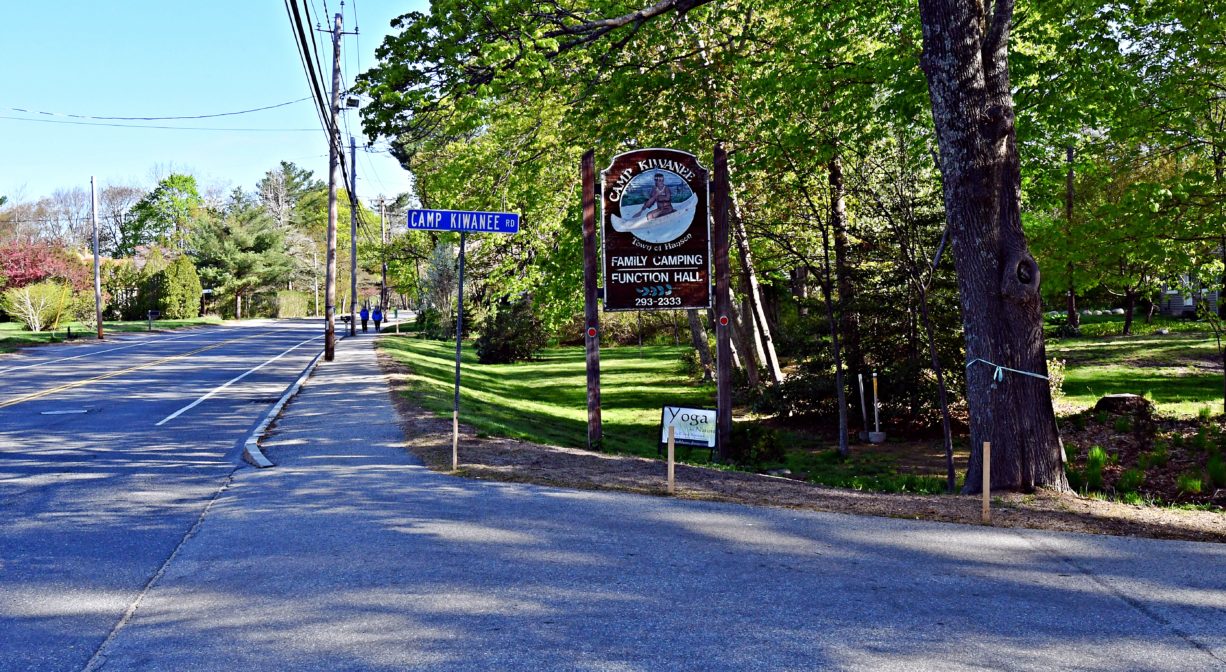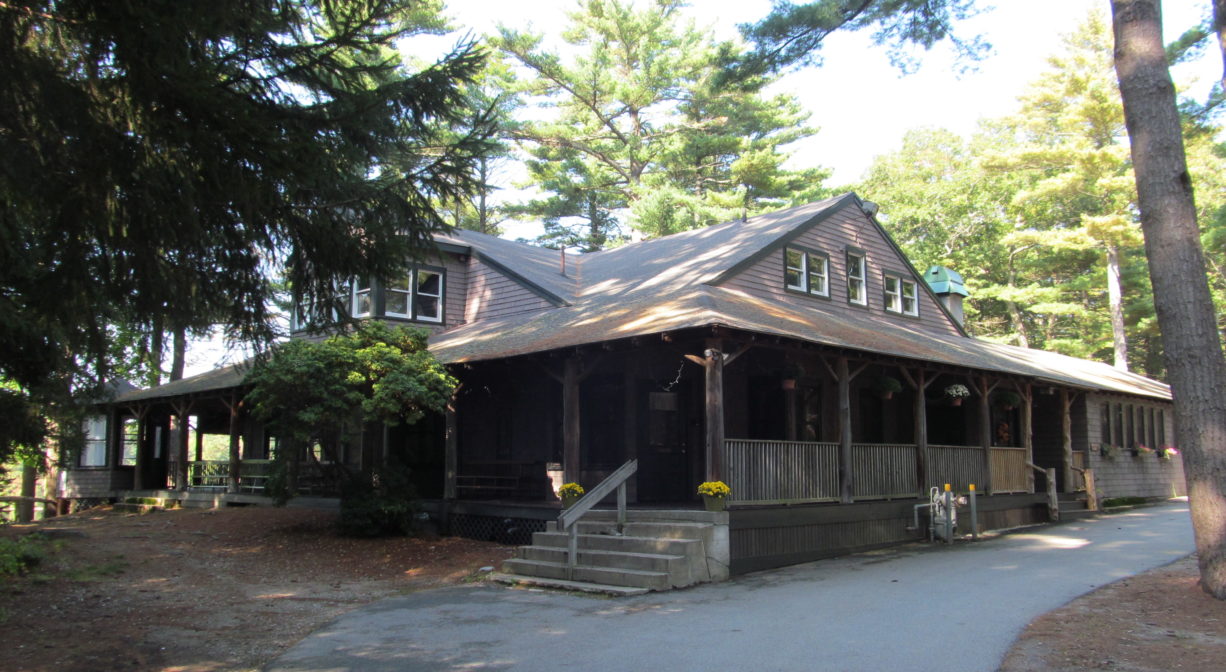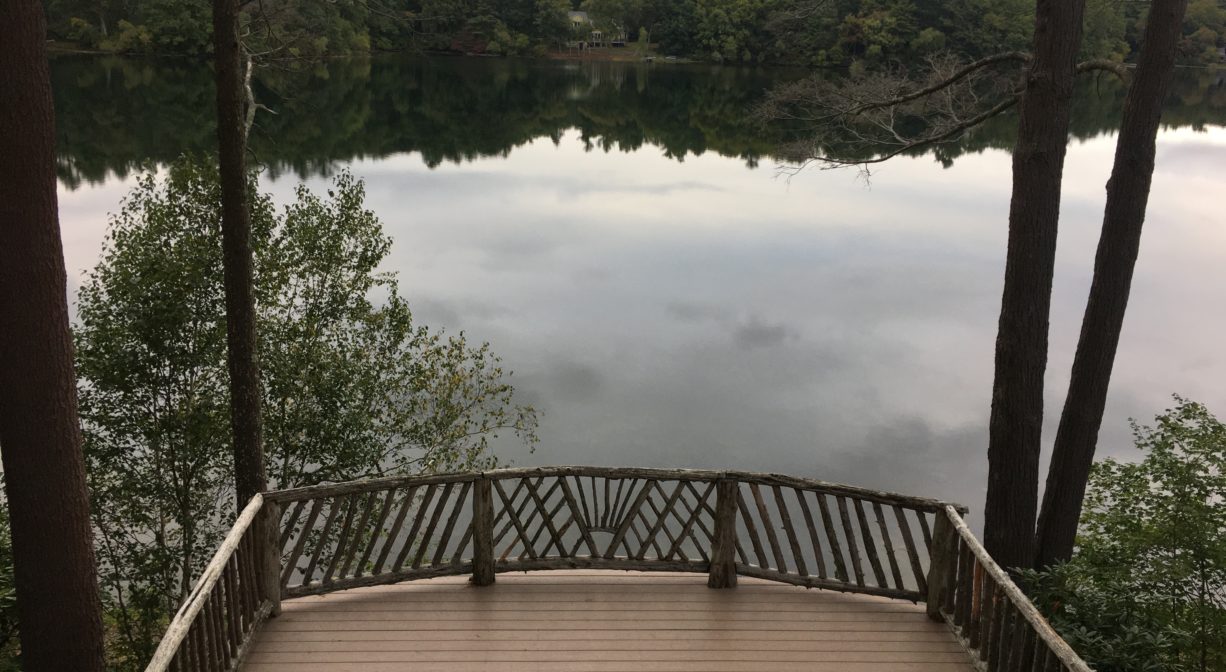Camp Kiwanee, Camp Kiwanee Road, Hanson, MA, USA
https://officialcampkiwanee.com
Owned By: Town of Hanson
Camp Kiwanee is a historic town-owned campground and function venue with wooded trails. It is located on Maquan Pond in Hanson, MA.
FISHING ADVISORY: It’s important to know that some of our freshwater fisheries are contaminated with mercury, PFAS and/or other concerning substances. The Massachusetts Department of Public Health maintains an online database with up-to-date advisories regarding fish consumption, sorted by location. We recommend you consult this valuable resource when planning a fishing excursion.
Features
This land is within the region of the Massachusett (or Massachuseuk) Native American tribe. The Mattakeeset band of the Massachusett lived for thousands of years in the North River watershed. Their village included most of today’s Pembroke and Hanson.
To travel between the North River watershed and the Taunton River watershed, the Mattakeeset followed a trail that extended from today’s Indian Head Pond (accessible from Camp Kiwanee via the Alton J. Smith Reserve) to Crooker Place and today’s Indian Crossway Conservation Area, through the great Cedar Swamp (today’s Burrage Pond Wildlife Management Area), through today’s Smith-Nawazelski Conservation Area (Elm Street, Hanson) to East Bridgewater and the Taunton River watershed.
To learn more about local Native American tribes, we encourage you to interact with their members. The Massachusett tribe at Ponkapoag and the Mattakeeset band of the Massachusett share information on their websites.
In 1904, Albert Burrage, a wealthy Boston lawyer, established a summer residence at what is now known as Camp Kiwanee, after purchasing the land a few years prior. In 1907, the house and its contents were destroyed by fire. The following year, it was rebuilt as “The Needles,” along with a stone firehouse and cottage building.
The Camp Fire Girls purchased the property in 1922. They named it Camp Kiwanis, believing that this was a Native American phrase meaning “we get together” or “we make noise.” The camp opened the following year, and through the years several other buildings were added.
In 1931, the National Aquatic Training School of the American Red Cross began renting the property, and constructed an elaborate dock system, which remained in place until the late 1970s. Camp amenities were enhanced in the 1940s with the construction of screened cabins; a dining hall was added in the early 1960s. By this time, the name of the camp had been changed to Camp Kiwanee, meaning “spirit of joy and youth.”
The Town of Hanson purchased Camp Kiwanee in 1979. It is open to the public for recreation and events such as weddings and plays. Needles Lodge, which serves as camp headquarters, was added to the National Register of Historic Properties in 2005.
Trail Description
Trails through the woods lead to Maquan Pond & Cranberry Cove, the Sleeper Conservation Area, Indian Head Pond, the Alton J. Smith Reserve, and the J. J. Shepherd Memorial Forest.
A small portion of the Bay Circuit Trail runs through the property. The Bay Circuit Trail is 200 miles of linked green space from Plum Island in Newburyport to Bay Farm in Duxbury. This particular section is known as the Mattakeeseett Path.
For a self-guided walking tour (provided by John Seamans), start at the main lodge. Head down the stairs to the waterfront. Look for numbered signpost #1, which indicates where Albert Burrage planted rhododendrons among the pine and hemlock trees. You’ll also find birch and beech trees here, and — in season — mayflower.
Turn north (right), continue past the boathouse. Along the way, look for gray reindeer moss, club moss, and checkerberries (teaberry) on the ground.
Next, look for a small stairway which leads to a dirt road. If you were to continue up the hill here, you would see the ruins of the “Bluebird House”. There are also poplar trees, red sumac and white birch.
Follow this around the northeast section of the property, and you’ll continue past some Appalachian-style cabins. As you approach the swamp, look for skunk cabbage and yellow sheep laurel, a wetlands indicator. There is also a huge oak tree, more checkerberries, and lots of princess pine.
After the swamp, the road continues to the old ballfield. Some of the plant species found here include beech, aspen, black birch and sassafras trees, wild scallions, and woodbine (Virginia creeper), plus fiddlehead ferns in the spring.
After the ballfields, you can enter the section of the Bay Circuit Trail that runs through the cranberry bogs of the adjacent Alton J. Smith Reserve. Look for blueberry bushes, princess pine and sheep laurel tot he right, and spice bush (another wetlands indicator) to the left. You may also see lady slippers.
Follow the trail uphill to the tent site that overlooks Indian Head Pond. There are large holly and red pine trees here. Turn northwest (right) and follow the trail back to Camp Kiwanee Road. Turn right to return to the main lodge.
Habitats and Wildlife
Needles Lodge sits atop a glacial ridge. It offers a commanding view of Maquan Pond. The woods are primarily pine, with some hemlock, birch, beech, and oak.
The headwaters of Indian Head Brook are located on this property. Indian Head Brook flows north from Indian Head Pond, through Wampatuck Pond and Little Cedar Swamp, into the Indian Head River.
The Indian Head River forms the boundary between Hanover and Hanson, and merges with Pembroke’s Herring Brook, a short distance downstream of Ludden’s Ford Park, to form the North River at a spot called The Crotch. The North River flows 12 miles through Pembroke, Hanover, Norwell, Marshfield and Scituate, eventually making its way to Massachusetts Bay and the Atlantic Ocean.
Historic Site: Yes
Park: No
Beach: No
Boat Launch: No
Lifeguards: No
Size: 64 acres
Hours: Grounds: Dawn to Dusk; Business office M-F 9am-2pm
Parking: Limited on-site parking at Needles Lodge, at the end of Camp Kiwanee Road.
Cost: See website for rental information.
Trail Difficulty: Easy
Facilities:
Needles Lodge is a fully equipped event space with a commercial kitchen, restrooms, an event hall, sitting rooms, and a balcony overlooking Maquan Pond.
Dogs: Dogs must remain on leash. Please clean up after your pet!
Boat Ramp: No
ADA Access: Yes
Scenic Views: Yes
Waterbody/Watershed: Indian Head Brook (North River watershed)






